Related Research Articles

The Mongols are an East Asian ethnic group native to Mongolia, Inner Mongolia in China and the Buryatia Republic of the Russian Federation. The Mongols are the principal member of the large family of Mongolic peoples. The Oirats in Western Mongolia as well as the Buryats and Kalmyks of Russia are classified either as distinct ethno-linguistic groups or subgroups of Mongols.
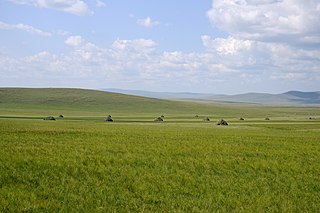
Inner Mongolia, officially the Inner Mongolia Autonomous Region, is a landlocked autonomous region of the People's Republic of China. Its border includes most of the length of China's border with the country of Mongolia. Inner Mongolia also accounts for a small section of China's border with Russia. Its capital is Hohhot; other major cities include Baotou, Chifeng, Tongliao and Ordos.
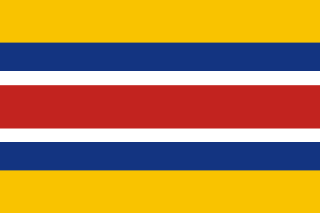
Mengjiang, also known as Mengkiang or the Mongol Border Land, and governed as the Mengjiang United Autonomous Government, was an autonomous area in Inner Mongolia, formed in 1939 as a puppet state of the Empire of Japan, then from 1940 being under the nominal sovereignty of the Reorganized National Government of the Republic of China. It consisted of the previously Chinese provinces of Chahar and Suiyuan, corresponding to the central part of modern Inner Mongolia. It has also been called Mongukuo or Mengguguo. The capital was Kalgan, from where it was under the nominal rule of Mongol nobleman Demchugdongrub. The territory returned to Chinese control after the defeat of the Japanese Empire in 1945.

Hohhot, formerly known as Kweisui, is the capital of Inner Mongolia in the north of the People's Republic of China, serving as the region's administrative, economic and cultural center. Its population was 3,446,100 inhabitants as of the 2020 census, of whom 2,944,889 lived in the metropolitan area consisting of 4 urban districts plus the Tümed Left Banner.
Inner Mongolia University is a university in Hohhot, Inner Mongolia, under the authority of the Inner Mongolia regional government. It is a member of the Chinese state Double First Class University Plan and former Project 211, and identified as a Double First Class University by Chinese Ministry of Education.
Inner Mongolia University for the Nationalities is in Tongliao, Inner Mongolia, China, under the direct administration of the Chinese Government's Inner Mongolia Autonomous Region. IMUN is accredited by the Chinese government and recognized by the World Health Organization (WHO) and World Federation for Medical Education.
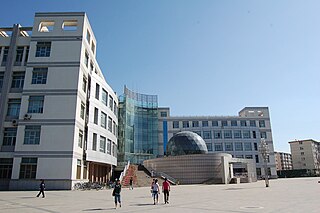
Inner Mongolia Agricultural University is a university in Hohhot, Inner Mongolia, China under the authority of the Autonomous Region government. It is in Hohhot, the capital city of Inner Mongolia Autonomous Region. It was established in 1952. There are over 100 undergraduate degree programs and postgraduate courses across a range of disciplines, including Agricultural, Engineering, Science, Art, Business, and Management.
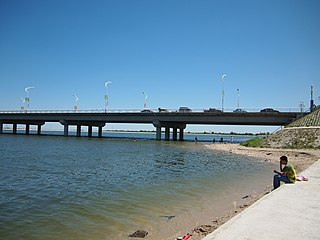
Tongliao is a prefecture-level city in eastern Inner Mongolia, People's Republic of China. The area is 59,535 square kilometres (22,987 sq mi) and as of the 2020 census, its population was 2,873,168. However, the city proper made of Horqin district, had 921,808 inhabitants. The city was the administrative centre of the defunct Jirem League.
East Asian studies is a distinct multidisciplinary field of scholarly enquiry and education that promotes a broad humanistic understanding of East Asia past and present. The field includes the study of the region's culture, written language, history and political institutions. East Asian Studies is located within the broader field of Asian studies and is also interdisciplinary in character, incorporating elements of the social sciences and humanities, among others. The field encourages scholars from diverse disciplines to exchanges ideas on scholarship as it relates to the East Asian experience and the experience of East Asia in the world. In addition, the field encourages scholars to educate others to have a deeper understanding of and appreciation and respect for, all that is East Asia and, therefore, to promote peaceful human integration worldwide.

Mongols in China or Mongolian Chinese are ethnic Mongols who were integrated into the nation-building of the Republic of China (1912–1949) after the fall of Qing Empire (1636–1911). Those not integrated broke away in the Mongolian Revolution of 1911 and again in 1921. The Republic of China recognized Mongols to be part of the Five Races Under One Union. Its successor, the People's Republic of China (1949-), recognized Mongols to be one of the 55 ethnic minorities in China.
The Lifan Yuan was an agency in the government of the Qing dynasty of China which administered the empire's Inner Asian territories such as Mongolia and oversaw the appointments of Ambans in Tibet. Until the 1860s, it was also responsible for the Qing's relations with the Russian Empire.

The American Center for Mongolian Studies (ACMS) is a US registered 501(c)3 not-for-profit, academic organization which promotes research and scholarship in Inner Asia, a broad region consisting of Mongolia and parts of China, Russia and Central Asia, including Inner Mongolia, Xinjiang, Buryatia, Tuva and eastern Kazakhstan.

Pan-Mongolism is an irredentist idea that advocates cultural and political solidarity of Mongols. The proposed territory, called "Greater Mongolia", Also known as :which means "Whole Mongolia" usually includes the independent state of Mongolia, the Chinese regions of Inner Mongolia and Dzungaria, and the Russian republic of Buryatia. Sometimes the autonomous republic Tuva, the Altai Republic and parts of Zabaykalsky Krai and Irkutsk Oblast are included as well. As of 2006, all areas in Greater Mongolia except Mongolia have non-Mongol majorities.
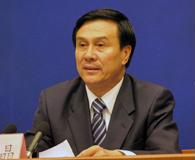
Yang Jing is a former Chinese politician of Mongol heritage. He previously served as State Councilor and Secretary-General of the State Council, and the President of the Chinese Academy of Governance.
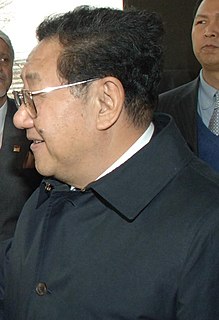
Chen Kuiyuan is a former Chinese politician. In a lengthy public career, Chen served variously as the vice chairman of Chinese People's Political Consultative Conference (CPPCC), the president and the Party chief of Chinese Academy of Social Sciences, and party chief of Tibet Autonomous Region and Henan province. He retired in 2013.
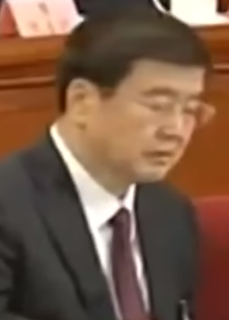
Bagatur or Bater is a Chinese politician of Mongol ancestry, formerly serving as the Chairman of the State Ethnic Affairs Commission. A career party functionary with background in the Communist Youth League, Bagatur steadily ascended the ranks of government, spending his entire career in Inner Mongolia. Between 2009 and 2016, he served as Chairman of Inner Mongolia.

Religion in Inner Mongolia is characterised by the diverse traditions of Mongolian-Tibetan Buddhism, Chinese Buddhism, the Chinese traditional religion including the traditional Chinese ancestral religion, Taoism, Confucianism and folk religious sects, and the Mongolian native religion. The region is inhabited by a majority of Han Chinese and a substantial minority of Southern Mongols, so that some religions follow ethnic lines.

The 2020 Inner Mongolia protests was a protest caused by a curriculum reform imposed on ethnic schools by China's Inner Mongolia Department of Education. The two-part reform replaces Mongolian with Standard Mandarin as the medium of instruction in three particular subjects and replace three regional textbooks, printed in Mongolian script, by the nationally-unified textbook series edited by the Ministry of Education, written in Standard Mandarin. On a broader scale, the opposition to the curriculum change reflects ethnic issues in China and the decline of regional language education in China.
In Inner Mongolia, China, a sumu is a township-level political/administrative division. The sumu division is equivalent to a township but is unique to Inner Mongolia. It is therefore larger than a gaqa and smaller than a banner. Examples include Shiwei, Inner Mongolia and Honggor Sumu, Siziwang Banner.